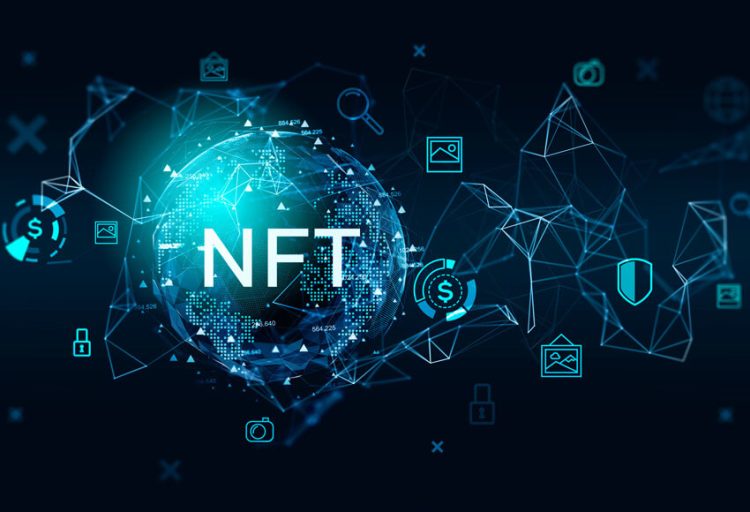Introduction
Blockchain technology has revolutionized the world in numerous ways, offering solutions for transparent financial systems, secure data exchanges, and decentralized applications. However, as blockchain adoption has grown—especially with the rise of cryptocurrencies like Bitcoin—so has its environmental impact. The consensus mechanisms powering many blockchains, particularly Proof of Work (PoW), require massive amounts of computational power and, in turn, consume enormous amounts of energy. This has led to growing concerns about the carbon footprint of blockchain networks.
Given the pressing global need for sustainable solutions, the development of environmentally friendly blockchain technology is becoming more critical. This article will explore how blockchain can be designed and implemented in a way that reduces its environmental impact. It will cover different strategies, including the use of alternative consensus mechanisms, energy-efficient technologies, and integration with renewable energy sources. Additionally, we will explore how blockchain can support environmental sustainability goals in broader contexts.
Understanding the Environmental Impact of Blockchain Technology
Before diving into solutions, it’s essential to understand why blockchain technology, particularly cryptocurrencies, has come under scrutiny for its environmental effects.
1. Proof of Work and Energy Consumption
The most commonly used consensus algorithm in blockchain networks is Proof of Work (PoW). PoW requires participants (miners) to solve complex cryptographic puzzles in order to validate transactions and add new blocks to the chain. This process is energy-intensive because it demands high computational power to ensure network security and integrity.
For example, Bitcoin, the largest PoW-based cryptocurrency, consumes more energy annually than some entire countries, such as Argentina. The environmental cost of such energy consumption is exacerbated when the electricity comes from fossil fuels like coal, which contributes significantly to global warming and environmental degradation.
2. E-Waste Generation
In addition to high energy consumption, blockchain mining also generates electronic waste (e-waste). The specialized mining hardware used for PoW, such as Application-Specific Integrated Circuits (ASICs), have a limited lifespan. Once these devices become obsolete, they are often discarded, contributing to the growing problem of e-waste.
3. Carbon Footprint
The carbon footprint of blockchain networks is directly tied to the energy sources powering them. In regions where electricity generation is heavily reliant on non-renewable resources like coal, the environmental impact of PoW blockchains is particularly harmful.
For instance, Ethereum, the second-largest blockchain network, has also faced criticism due to its energy consumption under the PoW consensus mechanism.

Strategies for Achieving Environmentally Friendly Blockchain
1. Transition to Proof of Stake (PoS)
One of the most promising solutions to reduce the environmental impact of blockchain networks is transitioning from Proof of Work (PoW) to Proof of Stake (PoS).
How Proof of Stake Works
PoS replaces the energy-intensive mining process with a more energy-efficient mechanism. In a PoS system, validators are chosen to create new blocks and verify transactions based on the number of tokens they hold and are willing to “stake” as collateral. Instead of solving cryptographic puzzles, validators are selected based on their stake in the network, significantly reducing the need for computational power and energy.
Impact of PoS on Energy Efficiency
Since PoS doesn’t require the massive energy consumption associated with PoW mining, it is considerably more energy-efficient. For example, Ethereum, which originally used PoW, has transitioned to PoS through its Ethereum 2.0 upgrade. Early estimates suggest that this transition will reduce Ethereum’s energy consumption by more than 99%, leading to a significant reduction in the environmental impact.
2. Hybrid Consensus Mechanisms
While PoS offers substantial energy savings, hybrid consensus mechanisms combine PoS with other techniques to optimize performance and scalability. These mechanisms can offer better transaction speeds and reliability, without the energy-draining processes involved in PoW. Some promising hybrid models include:
- Proof of Authority (PoA): In this model, trusted entities, rather than anonymous miners, are selected to validate transactions. This requires minimal energy and is often used in private or permissioned blockchain systems.
- Delegated Proof of Stake (DPoS): This approach allows stakeholders to elect delegates who validate blocks on their behalf. DPoS systems, like EOS and TRON, are energy-efficient and provide fast transaction speeds.
By combining the strengths of various consensus models, hybrid blockchains can reduce the energy footprint while maintaining the security and decentralization that blockchain technology is known for.
3. Renewable Energy Integration
Another important strategy to reduce the environmental impact of blockchain technology is integrating blockchain systems with renewable energy sources. This involves sourcing the energy required for blockchain operations from solar, wind, hydroelectric, or other renewable sources.
Blockchain Mining with Renewable Energy
One way to achieve an environmentally friendly blockchain is by powering mining operations with renewable energy. Mining farms, which require significant power to run, are increasingly being powered by solar panels, wind turbines, or hydropower.
- Green Mining Projects: Several blockchain projects are exploring the possibility of using blockchain technology to facilitate renewable energy trading. For example, Power Ledger, an Australian company, enables peer-to-peer energy trading using blockchain, helping to improve energy efficiency and reduce carbon emissions.
Solar-Powered Blockchain
In regions where solar energy is abundant, blockchain mining can be run entirely on solar power. This reduces the reliance on grid electricity and lowers the carbon footprint. For example, SolarCoin is a blockchain-based cryptocurrency that rewards individuals or organizations that generate solar energy. By incentivizing solar energy production, SolarCoin promotes environmental sustainability.
4. Blockchain for Tracking Carbon Emissions
Blockchain technology can also play a crucial role in tracking and reducing carbon emissions. By using decentralized ledgers, organizations can create transparent and tamper-proof records of carbon credits, energy consumption, and environmental impact.
Carbon Credit Markets
Blockchain is already being used to create carbon credit markets, where companies can buy and sell credits for their carbon emissions. These systems are transparent, and by leveraging smart contracts, they can ensure that credits are traded efficiently and accurately.
For example, Verra, a leading global registry for carbon credits, is exploring the use of blockchain to increase transparency and trust in carbon credit trading. Blockchain can help to track carbon offset projects, ensuring that they fulfill their stated environmental goals.
Supply Chain Sustainability
Blockchain’s transparency features can also be used to ensure the sustainability of supply chains. By tracking the movement of goods and raw materials through a blockchain, companies can ensure that the materials come from sustainable sources and that carbon emissions associated with transportation and production are minimized.
5. Optimizing Blockchain Protocols for Energy Efficiency
Aside from consensus mechanisms, blockchain networks can be optimized at the protocol level to reduce energy consumption. This involves making the blockchain’s design more efficient, including:
- Sharding: Sharding is a technique that breaks the blockchain into smaller parts (shards) that can process transactions in parallel. This leads to faster processing times and lower energy consumption per transaction.
- Layer 2 Solutions: Layer 2 scaling solutions, such as Lightning Network for Bitcoin or Optimistic Rollups for Ethereum, move transactions off the main blockchain, reducing the burden on the primary network and conserving energy.
6. Green Blockchain Certifications
The rise of green blockchain certifications will allow consumers, businesses, and regulators to identify blockchain platforms that are committed to reducing their environmental impact. These certifications can act as a signal to the market that a particular blockchain is eco-friendly and aligned with sustainable practices.
Sustainable Blockchain Initiatives
Organizations like the Blockchain for Social Impact Coalition (BSIC) and Green Blockchain Initiative are working towards creating a global standard for measuring the environmental impact of blockchain technologies. These standards could include carbon offsetting, the use of renewable energy, and the promotion of environmentally sustainable business practices.
Challenges to Achieving Environmentally Friendly Blockchain
While there are several solutions to minimize the environmental impact of blockchain, challenges remain. These include:
- Adoption and Transition Costs: Moving from PoW to PoS or adopting hybrid systems can be costly and time-consuming for blockchain networks. It requires a significant technical overhaul and the coordination of various stakeholders.
- Scalability and Performance Trade-Offs: Some energy-efficient blockchain solutions, such as PoS, may struggle with scalability, especially during periods of high network traffic.
- Regulatory and Political Barriers: Governments may impose regulations or taxes that limit the use of renewable energy for blockchain mining, particularly in regions where energy infrastructure is not conducive to the widespread adoption of green technologies.
Conclusion
Achieving environmentally friendly blockchain technology is not only possible but necessary. By transitioning to energy-efficient consensus mechanisms like Proof of Stake, integrating blockchain systems with renewable energy, and utilizing blockchain for tracking carbon emissions, the blockchain community can significantly reduce its environmental footprint.
Blockchain can become a tool for environmental sustainability, not just in terms of reducing its energy consumption, but also by promoting transparency, accountability, and sustainability in various sectors. As the world continues to move towards more sustainable energy practices, blockchain technology should evolve to support this global transition.
The future of blockchain is not only about innovation in finance and decentralization—it’s also about making these technologies environmentally responsible, creating solutions that benefit both the digital economy and the planet.

















































